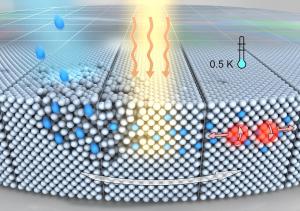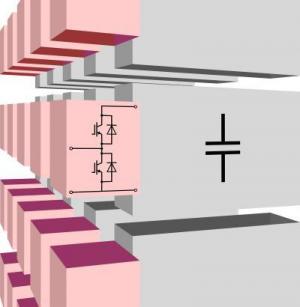Have you ever dreamed of your own air vehicle so you can travel all the way flying anywhere and reach your destinations in shortest time, so here is the vehicle of your dreams, the HOVERBIKE. It is your private helicopter. Hoverbike is a bike which functions same as the motorbike but the difference is that motor bike travels on roads and the Hoverbike travels in air. Hoverbike is now in manufacturing process and almost completed by the Australians engineers while nowadays they are performing some test on its flight and defining its specification step by step after experiments. They say that these bikes will be available to you soon. Now below we discuss some important parameters and specification of this bike and see how this bike works. I am also embedding some pictures of Hoverbike which is taken from the official site of Hoverbike and are captured by the manufacturers.
[houdini]






The structure of Hoverbike look likes the road bike if it’s both wheel rotated 90°. It has a seat in its middle and to provide the thrust there are two fans on the front and back. In the first design of Hoverbike single blade fan is used however according to the manufacturer, modification is expected in the next models of Hoverbike. Hoverbike functions same as a normal bike it has a throttle through which you can vary its thrust, it has a handle through which you can turn the Hoverbike right and left although it’s turning is not very immediate as the road bike because it will be in air. Hoverbike has a dry weight of 110 kg and it can have maximum weight of 270 kg with fuel and driver. The fuel consumption of the Hoverbike is considerable it burns 0.5litres in 1 minute and for a ride of 1 hour you will need 30 liters of fuel. Hoverbike can have two fuel tanks. The built in tank have 30 liters capacity while an extra fuel can also be added to it and this will increase the fuel capacity of Hoverbike up to 60 liters. The cost of Hoverbike according to the manufacturers of Hoverbike is approximately $45,000AUD +/-$5000. Some other main specifications are given below:
- Airspeed Vne – 150 KIAS (untested)
- Hover (out of ground effect) – >10,000ft (estimated)
- Dry weight – 110kg
- Max gross weight – 270kg
- Total thrust – 295kg
- Engine – 80kw @ 7500rpm
Engine Type: flat twin 4-stroke, one camshaft and 4-valves per cylinder, central balancer shaft
Engine Displacement: 1170cc
Bore& Stroke: 101mm x 73mm
Compression Ratio: 12.0:1
Nominal Output: @7500rpm 80KW
Cooling: Aircooled
Ignition: Electronic
Fuel System: Electronic intake pipe injection
Fuel tank capacity(without secondary tanks): 30L
Fuel tank capacity (with secondary tanks): 60L
Fuel Burn: 0.5L/min / 30L/hr
Fuel Type: Regular Unleaded
Drive-shafts: Custom Carbon fiber
Gearbox: Custom 1.5:1 reduction
Propellers: 2 x Tasmanian Oak with carbon fiber leading edge (made by Michael Ellinas from Heliptera)
Airframe: Carbon fiber with Kevlar reinforcement and foam core
Airframe width: 1.3m
Airframe length: 3m
Airframe height: 0.55m
Dry Weight: 105kg
Maximum takeoff weight: 270kg
Total Thrust: 295kg
Range: 148km on primary tank @ 80knts cruise (290km with secondary tanks installed)
Airspeed Vne: 150 KIAS (untested)
Hover: greater than 10,000ft (estimated)
- Aerial Cattle mustering
- Search and Rescue
- Aerial Survey
- Wildlife and Parks
- Film
- Power-line Inspection






